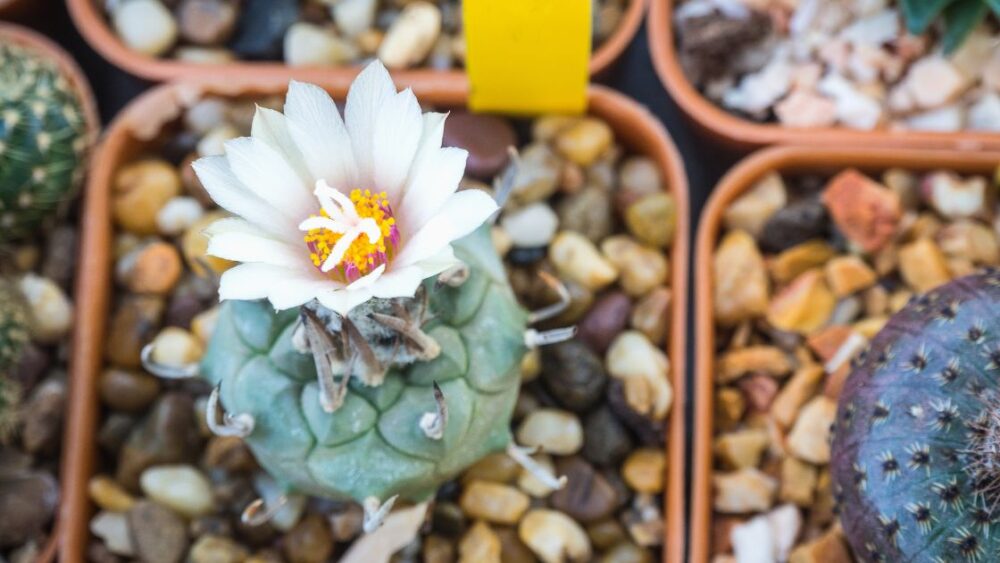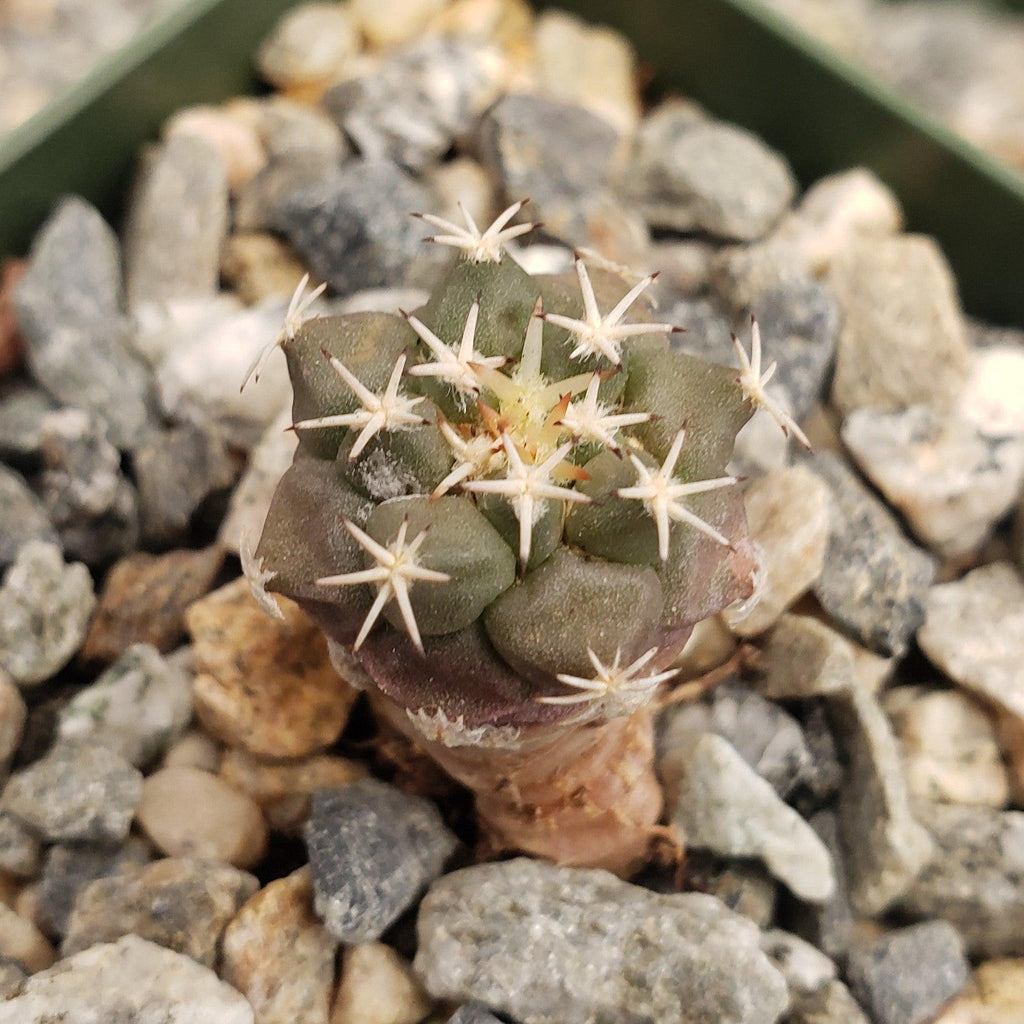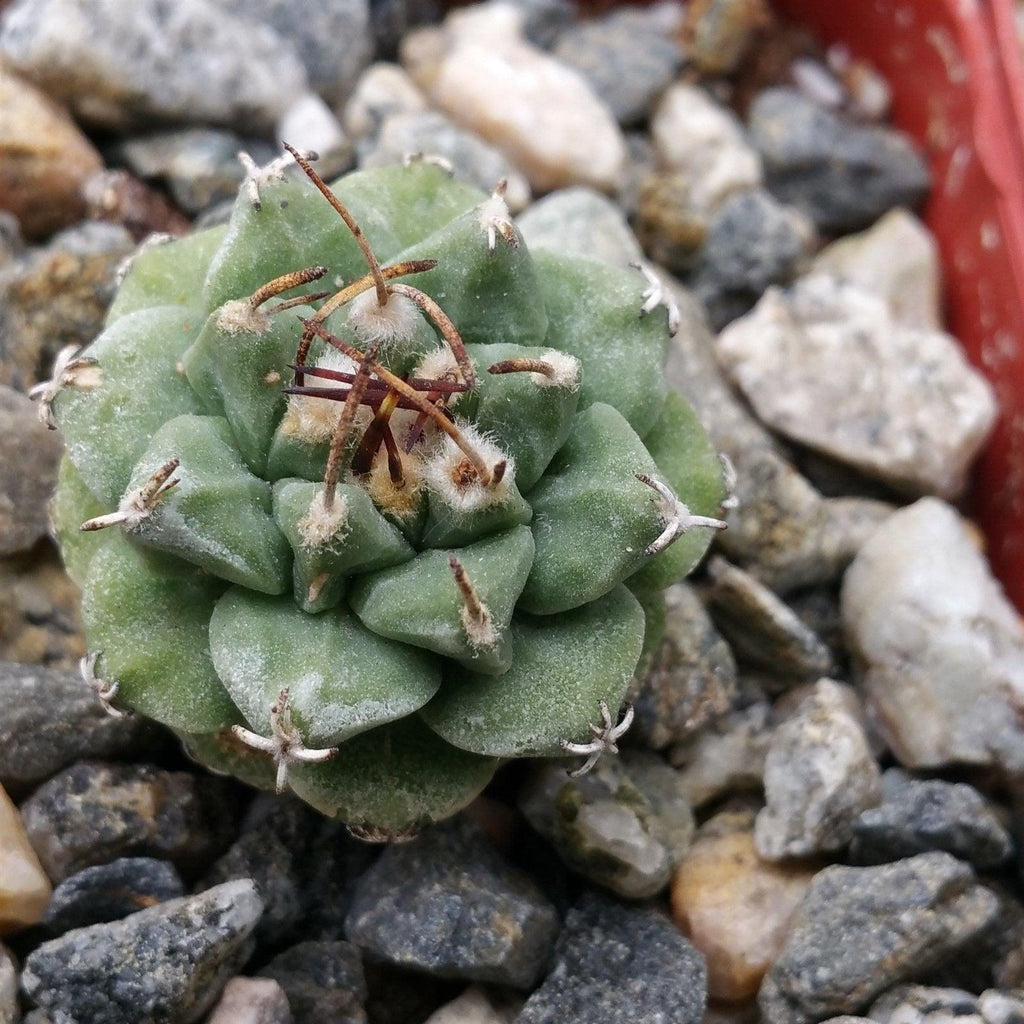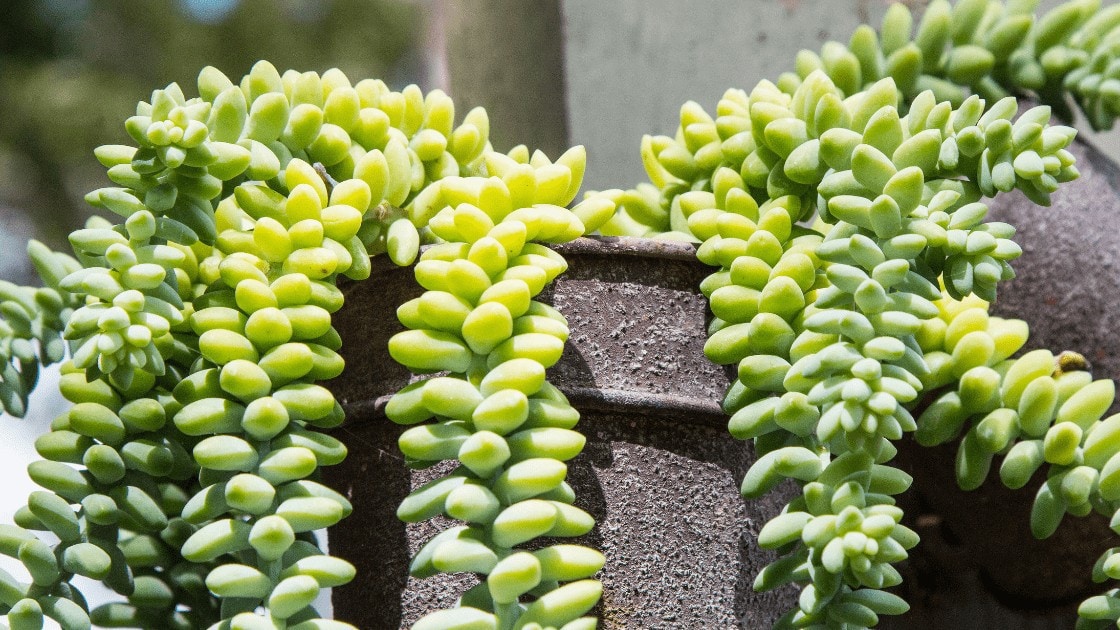
Are you a fan of miniature cacti, such as the ones you can keep alive in a container? If that’s the case, you’ll adore the Turbinicarpus Cactus. These tiny plants, at most 10 centimeters tall, nevertheless generate exceptionally lovely blossoms. They grow slowly and is easy to care for, so you may be pleasantly surprised with the results even if you lack experience. This is a genus contains 30 species of plants, originated from the northeastern Mexican states of San Luis Potos, Guanajuato, Nuevo León, Querétaro, Hidalgo, Coahuila, Tamaulipas, and Zacatecas.
Their bodies are round and squishy and armed with long, curved spines. As a result, they bloom nearly continuously during the warm season. Although plants native to arid, exposed areas have a thick taproot, this plant generally has shallow roots. In cactus terms, this species is critically endangered. As a result, only specimens successfully passed all CITES controls will be sold (International Trade in Endangered Species of Wild Fauna and Flora).
Are Turbinicarpus Cactus Easy To Care For?
The care of Turbinicarpus cactus requires consideration of a few things. The Turbinicarpus cactus does best in partial shade, away from the warmest parts of the day’s sun. There should not be a drop of more than 4 degrees Celsius throughout the winter. Soil components include coarse siliceous sand, regular garden soil, and vermiculite or volcanic stones.
Browse our Affiliate Products
For more information on other types of cacti we offer, click here to view our cactus category by clicking here: Cactus Category
Do Turbinicarpus Cactus Varieties Require The Same Care?
There are various options, but most of them have comparable needs regarding plant maintenance. Studying the needs of Turbinicarpus, a plant that thrives in direct sunlight, while keeping it safely inside is possible. During the hottest hours, Turbinicarpus alonsoi prefers semi-shade exposures.
For more Turbinicarpus vartiies on etsy.com, click here.
Turbinicarpus Cactus Care

You should use cultural information as a guide and adapt it to your needs. You need to consider many factors, including your physical location, where you grow your plants, and your availability to care for them. If you want to decide what type of culture is best for you and your plants, you must first determine which method suits them.
Common Name
Turbinicarpus Cactus is known by many common names, each with slight variations. But the most common name of this cactus is Turbinicarpus.
Scientific Name
The scientific name of the Turbinicarpus Cactus is Turbinicarpus lophophoroides (Werderm.) Buxb. & Backeb.
Growth Cycle
Growing a turbinicarpus from seed is possible. Although slow to start, you can have plants of acceptable size with flowers about the same size as the plants after two years. Creating clumps like those illustrated above will take a lot more time.
Sunlight Effect
As a heliophilic plant, Turbinicarpus requires ample sunshine for healthy development and flowering. It’s suitable for a sun-drenched patio or yard. However, it should be covered or cooled a little in the hot summer to prevent damage from high temperatures.
Watering
Infrequent watering is all that is needed for the drought-resistant plant, Turbinicarpus. When the soil dries out entirely, please give it a good soaking. To prevent standing water in a tray, water potted plants carefully, waiting for the water to drain out the bottom before emptying the tray.
It blooms in the spring and grows throughout the summer and autumn. Once or twice a week should be enough to keep the soil moist. In the winter, water less frequently, maybe once a week, just enough to prevent the soil from drying out completely. Additionally, it is best to use distilled or rainwater instead of tap water for watering plants.
Calcium, magnesium, and other mineral salts are abundant in municipal tap water. Soil compaction typically results from continuous use. If you want to keep the stem from decaying, water it carefully and avoid getting any water on it.
Adult Size
In addition, the succulent spherical stem never gets very tall. A plant’s 2.4–2.75-inch diameter is reached in this particular region (6 – 7 cm). The lengthened portion of this fascinating cactus remains compact.
Since succulents are very similar in nature and would like more information on other mini succulents, check out this article: Mini Succulents: The Big World of small plants.
Planting Zones
From USDA hardiness zones 9b to 11b, the temperature range is from 25 °F (3.9 °C) to 50 °F (+10 °C).
Weather Hardiness
The Turbinicarpus is found worldwide in hot, dry climates, including the tropics, subtropics, and even the semi-desert. The optimal growing range is between 20 and 35 degrees Celsius. Suppose the temperature drops below 10 °C or rises beyond 35 °C, growth stops, and dormancy sets in. Humidity levels shouldn’t be too high, and proper ventilation is essential. It’s best to avoid damp areas and places where water has pooled.
Propagation Of Turbinicarpus Cactus
Seeding is just one proliferation technique; division and grafting are also important. You can propagate new plants by cutting off the top or a lateral branch and planting it in the ground. Small new shoots will emerge close to the incision after some time has passed. Once a shoot has reached the appropriate size for transplantation, a new plant can be grown.
Find a good rootstock to use for the grafting process. Rootstocks, like those of the pitahaya tree, need to have their tips lopped off before the turbinicarpus (with its roots removed) may be placed in the middle and tied with rope. The two pieces will grow together in about a week to two, making it possible to cut the rope.
Toxicity Of Turbinicarpus Cactus
Fortunately, if your pet accidentally eats some turbinicarpus cactus, they won’t become sick. Some species can be mildly problematic if consumed, and others contain skin irritants that can cause minor skin irritations.
Dormancy
Plants may enter a short period of dormancy if temperatures rise over a certain threshold in the middle of summer. Please lower the water levels during this time. The plants should be fully dry through the rest of the fall and winter.
Soil
Fertile, gravelly, water-permeable soil with a pH of 6-7 is ideal for growing turbinicarpus. 60% vermiculite + 20% coco coir or peat moss + 20% sandy soil is a common mix for potting soil. You can also mix in some organic potting soil. Mixing lightweight culture media with soil will enhance its ability to absorb and release air, such as vermiculite. Soil fertility can also be increased by adding eggshell powder or vermicompost.
Turbinicarpus is highly sensitive at the root level due to the lack of oxygen. Root rot occurs if water and air cannot freely circulate through the soil. It is easy to evaluate permeability by seeing how quickly water drains through a medium instead of pooling on the soil’s surface and slowly percolating below. You should repot your plant yearly and loosen the soil to increase airflow.
Click here to view our cacti and succulent soils and fertilizer affiliate products: Cacti & Succulents
Bloom

These are just a few of the many cacti species that flower in April.
Fertilization For Turbinicarpus Cactus
Turbinicarpus needs liquid fertilizer applied once per month during the growing seasons (spring, summer, and fall). In the dead of winter, fertilizer is unnecessary. When repotting in the spring or fall, it’s a good time to add a tiny amount of slow-release fertilizer and mix it into the soil.
Apply a nitrogen fertilizer while the plants are young and a phosphate-potassium fertilizer before and after flowering. Ideally, you’d like to use as little fertilizer as possible. Instead of using a high concentration of fertilizer, it would be preferable to apply low-concentrate fertilizer multiple times. Overfertilization is likely to blame for a yellowing base and sluggish growth; therefore, do not continue fertilizing.
Turbinicarpus Cactus Common Problems
Overwatering can promote the development of radical rot, and aphids and cochineal sometimes prey on turbinicarpus.
What To Do If Your Turbinicarpus Cactus Is Dying?
It is possible to try repotting the plant, where clean soil would replace infected soil. The roots should be thoroughly cleaned before being replanted in new soil. Even if your cactus has become soft and mushy, you can rescue it by taking cuttings and rooting them.
Conclusion
Turbinicarpus Cactus is a tiny plant that will decorate your room and corridor by hanging a rope. This drought-tolerant cactus mostly serves from USDA hardiness zones 9b to 11b; the temperature range is from 25 °F (3.9 °C) to 50 °F (+10 °C). These tiny plants, at most 10 centimeters tall, nevertheless generate exceptionally lovely blossoms. These are just a few of the many cacti species that flower in April decorate your lawn.













